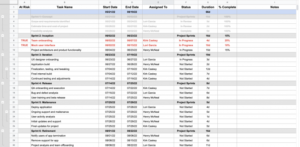
Due to the coronavirus, your company might need to create, revise, or implement policies for remote work, travel, business continuity, and disaster recovery. Download these helpful resources.
The coronavirus (COVID-19) outbreak is causing businesses around the world to reexamine their disaster preparedness plans. Companies need to plan and prepare for risks that may be involved with business continuity interruptions, cancelled business travel plans, possible data loss, unplanned downtime, and more associates working remotely.
These TechRepublic Premium downloads can help organizations develop strategies and best practices to keep businesses productive and running smoothly in the event of an emergency.
COVID-19 has spread to almost every country, causing businesses and schools to close, disrupting supply chains, and forcing many employees to work from their homes. This ebook is a compilation of the latest information, including impacts on tech conferences and the economy, related cybersecurity attacks, remote work tips, tracking and predicting how COVID-19 will spread, and the impact it has on the tech industry.
The modern workforce–and the companies that employ them–have increasingly embraced the concept of remote work over the traditional office. The benefits are well documented, including stress reduction, increased productivity, a wider talent pool, and better employee retention rates. Even so, it’s important to establish ground rules to keep the remote work program effective and manageable. The Policy Pack: Guidelines for Remote Workers, which will help guide you and your remote workers toward a successful telecommuting arrangement, consists of a Telecommuting Policy, Home Usage of Company-owned Equipment Policy, and Remote Access Policy.
How does an IT professional search for a remote position? This guidebook from TechRepublic Premium is here to help. In addition, this download provides CXOs with best practices, explains how remote work could increase productivity, lists the 26 remote jobs with salaries of $100K or more, details the 10 rules found in every good remote work policy, includes a Telecommuting Policy, and more.
As more users work from remote locations, the need for secure access to networks, systems, and data continues to grow. Using a virtual private network (VPN) to access internal resources when working remotely comes with responsibilities to uphold network security, as well as to safely and equitably use and protect company resources. This VPN Usage Policy provides guidelines to help IT ensure that the company’s VPN is properly deployed and outlines acceptable use policies for remote end users who are connected on company-issued and personal devices.
Natural and man-made disasters can jeopardize and possibly damage the operations and future of any company, so it’s critical to develop an emergency preparedness plan to help ensure ongoing business processes in a crisis. This Disaster Recovery and Business Continuity plan provides a roadmap that organizations can follow to implement sound disaster recovery and business continuity processes for risk reduction.
When computer systems won’t work, business grinds to a halt–and that costs your enterprise money. Even when business does not experience complete unplanned downtime, productivity can be lost to make estimating the cost of each incident a necessity. With the help of the Systems Downtime Expense Calculator, you can estimate just how much each downtime incident costs. Contained within this tool is the Assumptions tab, which asks you to provide the amount of productivity that will be lost by job category when certain key systems and networks fail, and the Basic Calculations tab, which creates quick snapshots of the cost of the downtime.
Risk management involves the practice of addressing and handling threats to the organization in the form of cybersecurity attacks and compromised or lost data. The process of establishing appropriate risk management guidelines is critical to ensure company operations, productivity, and reputation do not suffer adverse impact. This Risk Management Policy provides guidelines for establishing and maintaining appropriate risk management strategy and practices and can be customized as needed to fit the needs of your organization.
Employees who work from home often use company-supplied systems and devices, which helps ensure that they have consistent, state-of-the-art equipment to do their work. However, organizations should provide usage guidelines, such as this policy, covering the responsibilities of IT staff and employees.
Work from home policies and fully remote jobs top the priority list of many workers. After all, who doesn’t love the idea of working in their pajamas? Working from home also offers fewer distractions and interruptions from colleagues, reduces the stress of commuting, and provides a better work-life balance, not to mention, less office politics.
Working remotely has long been a trend in IT, but now, thanks to the spread of COVID-19, it’s becoming a reality for some of the IT workforce. While some employees may rejoice at the opportunity to work from home, others may view it with trepidation. TechRepublic Premium compiled the top tips–more than 250–to help tech professionals make the shift to remote work. Whether you’re the telecommuter or managing telecommuters, this ebook offers hundreds of helpful tips, strategies, and best practices in regards to productivity, time management, tools and equipment, morale, security, video conferencing, collaboration, management, and much more.
It’s an unfortunate event when an employee becomes severely ill (or a family member undergoes such a calamity) and requires an extended sick leave from work, but companies should have a plan in place for these situations. This plan needs to ensure that both the employee and the company have a set of duties and responsibilities and provide a fair arrangement for all involved parties.
When employees suffer accidents or undergo illness it may become necessary for them to engage in a leave of absence on a short-term basis. Unfortunately, this is more common than it may sound; the Social Security Administration reported in 2018 that “One out of four of today’s 20-year-olds will become disabled before age 67.” Offering short-term disability insurance for your employees enables them to remain free from worry about earning an income if they are sick or injured. This in turn makes the business an attractive employer and helps in the retention of quality talent during adverse circumstances.
Source of Article



